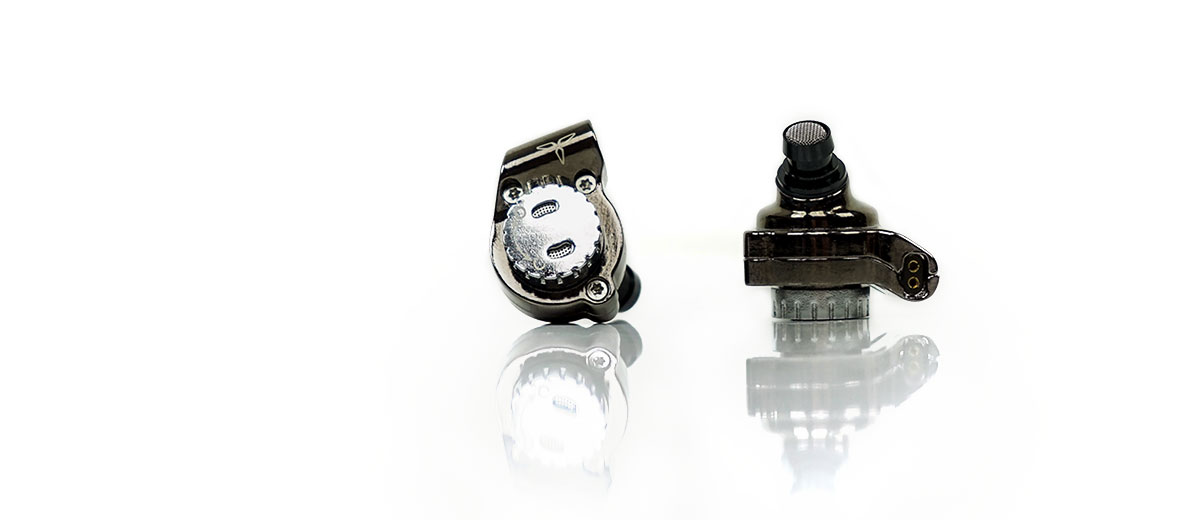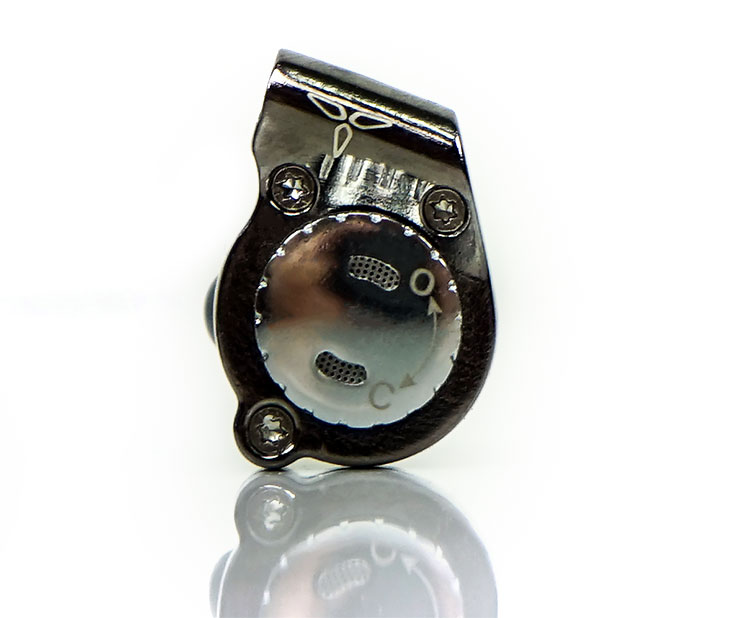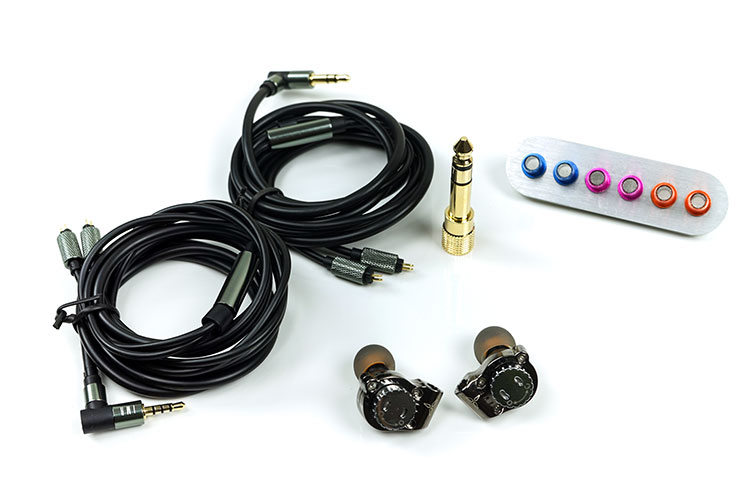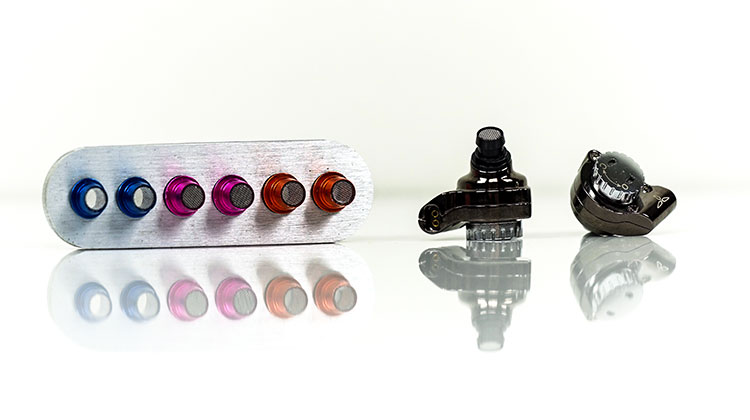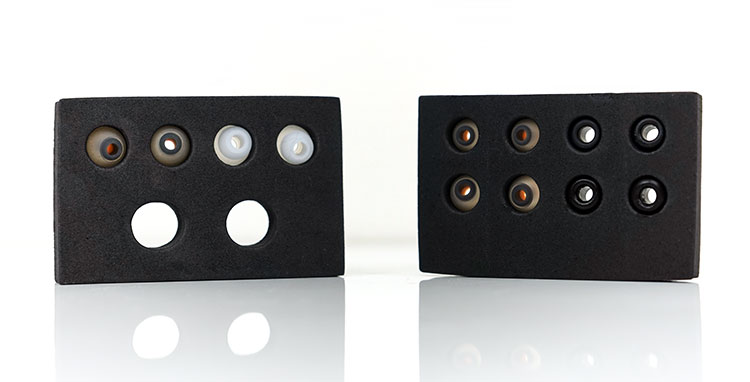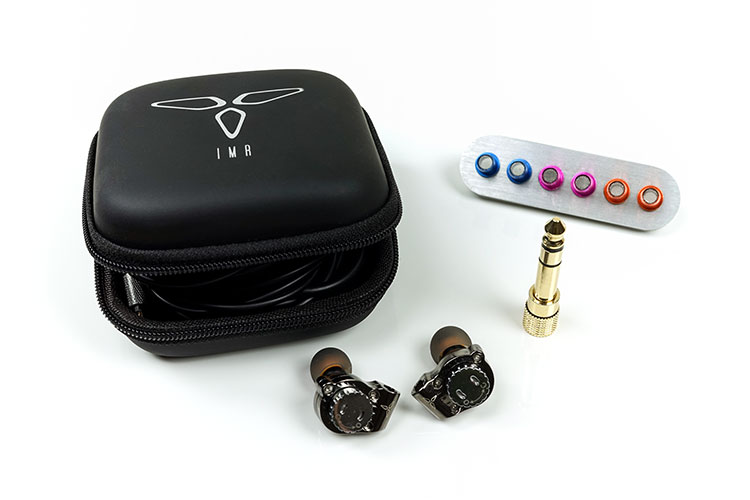IMR Acoustics R1 is a brand new dual dynamic IEM and marks the debut launch of the company itself in the UK. Price is at £500.
Disclaimer: The IMR Acoustics R1 was sent to us a sample in exchange for our honest opinion and does not have to be returned. IMR Acoustics is not a site advertiser or affiliated with Headfonics. We thank the team at IMR for giving us this opportunity.
To read up on other monitors we have reviewed on Headfonics click here.
Note, this review follows our new scoring guidelines for 2020 which you can read up on here.
The R1 universal IEM is the debut launch from a new company called IMR Acoustics who hail from the UK. The brains behind IMR is, in fact, Bob James previously of Trinity Audio Engineering.
He is the ‘king of filters’ as I like to call him given Trinity Audio got the use of filter technology down to such a fine art for tweaking the sound of their IEMs. We previously reviewed the Master from Trinity and the filters do make a huge difference to the final sound signature.
So IMR Acoustics and Bob are no “noobs” at this game. That means the R1 brings some of that engineering know-how, or Bob’s experience to put it bluntly, as well as, yes, new filter systems. This time, the R1 is no budget entry-level IEM. IMR Acoustics is starting right in the middle, in the competitive mid-fi land, with their debut launch.
This unique IEM is priced at a not-insignificant £500.
What Is The Pitch?
The Goal
IMR state it oh so clearly in terms of a pitch on their home page.
“My goal has been to create an in-ear monitor that sounds like an electrostatic headphone, air, detail, and soundstage.”
That is a pretty bold statement. As a closet Stax fan and having tested the Baby Stax v1/2 as well as AAW new Pola (ok just 15 minutes worth at a trade show) I am very keen to see if that goal is met. The watchwords are all stats descriptors for sure.
Filters Galore!
The rest of the pitch homes in on the unique engineering IMR have put into the design and functionality of the R1 to mark out it out from the rest of the crowd. The first of course is the filter set. The pitch here is choice of sound signature simply by threading in and out a different filter to achieve that. It is a tried and tested technique and it does work so I have no concerns that the R1 will not achieve that goal.
Open and Closed Design
The second pitch is a newer one and definitely a very unique proposition. The R1 is being marketed as the first IEM that can alternatively switch between an open back design and a closed back design by the simple turn of a dial.
The dial is on the front side of the driver shell and you can manipulate each driver going independently by the touch of a finger. The concept is to give an open signature in a quiet area for the listener and when they move to noiser environments they can close it up and continue to enjoy the music in relative peace.
Hybrid Driver
The final pitch is the driver itself which is a hybrid ceramic dynamic design. Technically is a custom dual driver with a beryllium 13mm dynamic and a hi-res ceramic driver working in tandem.
I have done ceramic driver reviews before, most notably RHA with their CL series, the CL1 and the CL750. Both of these are 150Ω low sensitivity monsters that require good amps to get the best out of them. IMR is pitching their 13mm driver version as much easier to drive at just 32Ω meaning you should not require a nuclear plant to drive it properly.
Build Quality
Form Factor
If I had not reviewed Acoustune’s whacky HS1551 CU a few weeks ago I would have said the R1 is very unique. However, in comparison to the HS1551 CU it is a touch more traditional in its lines but not by a huge amount. The form factor is more industrial aggressive contouring and dominant screws than plastic jellybean with lots of bumps. The big dial in the center of the faceplate dominates the rest of the looks along with a super sturdy-looking rear stem cable connector.
Materials
The R1 is slightly smaller than the HS1551 CU with a reasonable weight given its aluminum shell. This is a two-piece housing with the open and closed dial dominating the front and a medium length nozzle to the rear which houses the detachable filter system.
The whole look is then finished with chrome paint job that from a distance looks pretty smooth but does have a bit of pitting when pixel peeping. The dial has a lighter shade of silver compared to the more gunmetal hue of the main housing to produce an interesting aesthetic shimmering contrast. The IMR logo on the stem combined with a very easy to read left/right white labeling system finishes off the R1 look.
Cable
2-Pin
The cable system is quite unusual on the R1 because of the alignment of the connector on the main stem. The stem is built like a tank by the way and more in line with how an MMCX connector would look except that it is a traditional 0.78mm 2-pin connector system.
Connector Alignment
The unusual part of the connector is the horizontal alignment of the pins as opposed to the vertical housing in most other 2-pin IEMs. That pretty much means all aftermarket cables are not compatible with the R1 unless they are very soft and flexible. The general flow of an aftermarket 2-pin cable will mean it goes right into your ear at a right-angle rather than flow seamlessly over your ear.
The most natural cable, therefore, is the stock cable with the correct alignment of pins allowing you to run the cable around the back of your ear. You actually get 2 stock cables in the accessory kit and each is finished the same except for the jacks.
Two Stock Cables
This is a 1.4m OFC cable with a fairly robust looking tubed rubbery jacket terminated with some strong grippy pin barrels and a small right angle 3.5mm jack. Cable one is balanced and cable two is single-ended. It would not be wide of the mark to say the balanced cable got the majority of my time.
The cable itself is a little bouncy in handling but otherwise, memory free so no tangles and very low on microphonics so you won’t hear too much in the way of noise. The y-split barrel is finished with the same dark gunmetal chrome finish as the main driver shells and has a small cinch which works pretty well and doesn’t get in the way of things.
Filters
IMR has included five different filters with the R1 and all are neatly housed in a fetching little aluminum display. Each filter is very easy to work with as they are simply threaded into the tip of the nozzle in like 5 seconds. They are not as small and fiddly to work with as the FLC8s so you are less likely to use them and definitely not as confusing to work out which does what.
Each filter has a specified sound signature (which we will study in more detail on page 2) and IMR have indeed listed what the effect of each filter does:
- Black – Maximum attack with powerful impactful bass, rich mids, and controlled highs
- Pink – Slightly decreased bass from the black filter with the same mids and highs
- Copper – Maximum bass, lush mids, and slightly recessed highs
- Orange – Balanced bass and mids with rolled off highs
- Blue – Beautifully balanced across the range, natural and airy sound with perfect mid and sub bass
I have a feeling people are either going to go for the full-on Black, lush copper or balanced blue as their preference based on our listening tests.
Comfort & Fit
I have zero complaints about the R1 comfort and fit. It is beautifully weighted in the ear with very little movement. The nozzle is actually pointed up rather than at a right angle which I prefer as my ear canal naturally goes in that direction. Very little pressure on the walls of my ear canal.
Dial Control
I did find the difference between the open and closed position on the dial to not make a huge amount of difference in the level of external noise suppression. It will not suddenly let in a lot of external high-frequency noise in the open position being more of a semi-open nuanced level of control. The venting ports (4 of them) are exposed via the opening of the dial but still behind a mesh and not terribly visible.
What changes there is more in terms of the final presentation of the sound and it is nuanced rather than dramatic swapping physical density in the low end for a touch more air and openness in the top-end.
Tips
IMR has included a nice wide range of very useful tips for the R1. Whilst not stuffed full of tips they are exactly the selection I would be looking for in any mid-range offering. You have foam, dual-flange, and single bore silicon tips.
The issue you might have with the tips range is the lack of alternative size for the dual flange since the R1 comes with only one set. You also do not get a small size foam tip set. Instead, you get small, medium and large in the single bore silicone plus an additional medium on the R1 out of the box.
The silicone single bore is not terribly wide on the stem so they should retain a healthy level of bass response and seal. The dual flange tips are a little wider and do let in a tiny amount of additional high-frequency background noise. The foams are what you expect, the best for seal and isolate the most with a very strong level of attenuation.
Accessories & Packaging
The audiophile equivalent of the TARDIS. Bob has never forgotten how to origami his way into packing just about everything you can think of into a rather unassuming small retail box.
Inside you get the tips (foam, dual flange, and single bore silicone), the drivers themselves on display, a quarter jack converter, the filters in their display tray, 2 stock cables and a small zipper carry case with shit clip. That is a pretty stuffed box for me and represents great value.
Click on Page 2 below for Sound Impressions & Comparisons

